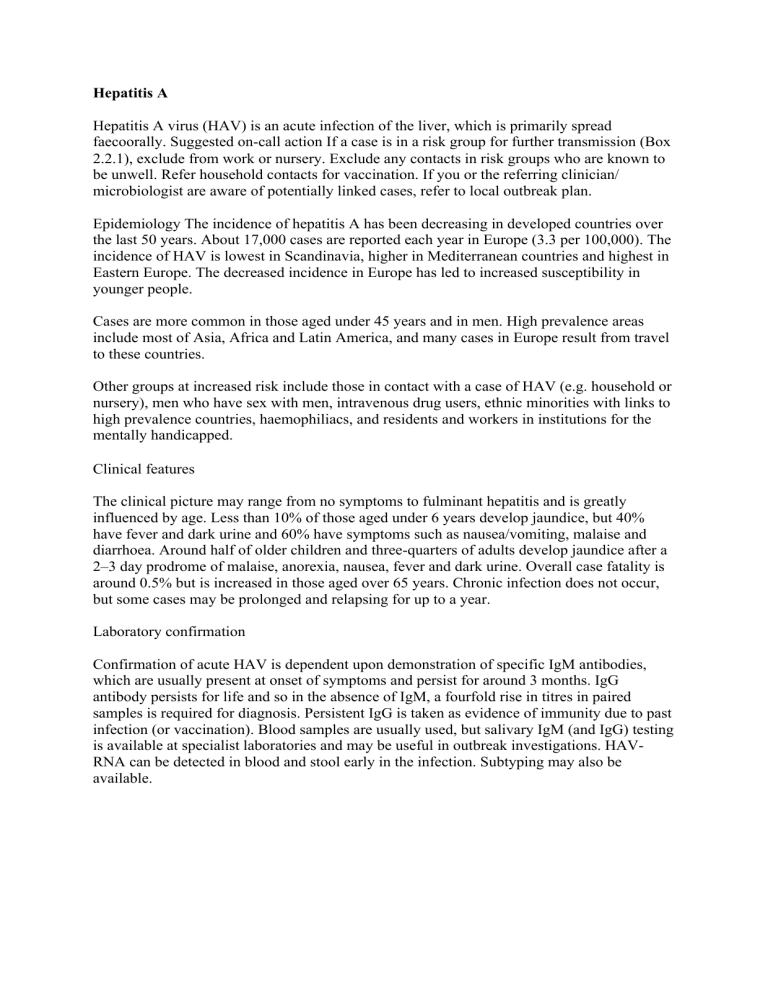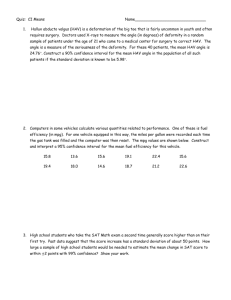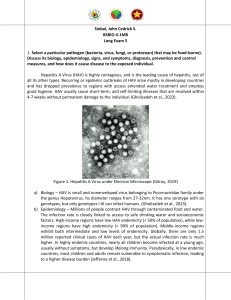
Hepatitis A Hepatitis A virus (HAV) is an acute infection of the liver, which is primarily spread faecoorally. Suggested on-call action If a case is in a risk group for further transmission (Box 2.2.1), exclude from work or nursery. Exclude any contacts in risk groups who are known to be unwell. Refer household contacts for vaccination. If you or the referring clinician/ microbiologist are aware of potentially linked cases, refer to local outbreak plan. Epidemiology The incidence of hepatitis A has been decreasing in developed countries over the last 50 years. About 17,000 cases are reported each year in Europe (3.3 per 100,000). The incidence of HAV is lowest in Scandinavia, higher in Mediterranean countries and highest in Eastern Europe. The decreased incidence in Europe has led to increased susceptibility in younger people. Cases are more common in those aged under 45 years and in men. High prevalence areas include most of Asia, Africa and Latin America, and many cases in Europe result from travel to these countries. Other groups at increased risk include those in contact with a case of HAV (e.g. household or nursery), men who have sex with men, intravenous drug users, ethnic minorities with links to high prevalence countries, haemophiliacs, and residents and workers in institutions for the mentally handicapped. Clinical features The clinical picture may range from no symptoms to fulminant hepatitis and is greatly influenced by age. Less than 10% of those aged under 6 years develop jaundice, but 40% have fever and dark urine and 60% have symptoms such as nausea/vomiting, malaise and diarrhoea. Around half of older children and three-quarters of adults develop jaundice after a 2–3 day prodrome of malaise, anorexia, nausea, fever and dark urine. Overall case fatality is around 0.5% but is increased in those aged over 65 years. Chronic infection does not occur, but some cases may be prolonged and relapsing for up to a year. Laboratory confirmation Confirmation of acute HAV is dependent upon demonstration of specific IgM antibodies, which are usually present at onset of symptoms and persist for around 3 months. IgG antibody persists for life and so in the absence of IgM, a fourfold rise in titres in paired samples is required for diagnosis. Persistent IgG is taken as evidence of immunity due to past infection (or vaccination). Blood samples are usually used, but salivary IgM (and IgG) testing is available at specialist laboratories and may be useful in outbreak investigations. HAVRNA can be detected in blood and stool early in the infection. Subtyping may also be available. Transmission HAV infection is spread primarily by the faeco-oral route from other humans. Up to 108 infectious units per millilitre are excreted in faeces during the late incubation period and the first week of symptoms. Viraemia also occurs during the prodromal phase of the illness but at much lower levels than in stool. Saliva and urine are of low infectivity. Faeco-oral spread is likely to be responsible for secondary transmission to household (average secondary attack rate about 15%) and nursery contacts, perhaps aided by transmission via fomites. HAV can spread rapidly but silently among mobile, faecally incontinent children in nurseries and then cause illness in their contacts. Infection in illicit drug users has been reported in several European countries and is likely to be due to poor hygiene, although contamination of drugs and needle sharing may contribute. Travellers to endemic countries risk exposure via food or water. HAV can survive for 3–10 months in water, suggesting that even in Europe, shellfish harvested from sewage-contaminated waters are a potential source; shellfish concentrate viruses by filtering large quantities of water and are often eaten raw or after gentle steaming which is inadequate to inactivate HAV. Infected food handlers with poor personal hygiene may also contaminate food. Imported fruit and salad vegetables have also caused outbreaks. Many cases of HAV do not have a recognised risk factor: it is likely that many of these contracted their infection from an undiagnosed or asymptomatic child case in their household. Such cases may be a factor in community outbreaks that evolve slowly over several months.







